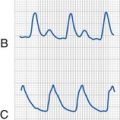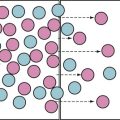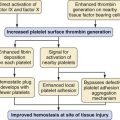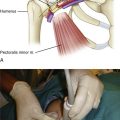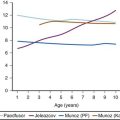52 Medicolegal Issues
MEDICOLEGAL ISSUES ARE a continuing concern for the anesthesia care team.1–10 Taken too seriously, they can alter practice so that legal concerns rather than medical principles are in control. Taken too lightly, these concerns can transform into an adverse outcome disaster. This chapter enumerates some of the medicolegal issues faced in clinical anesthesia and describes ways to balance a safe practice with avoidance of litigation.
Practice Areas of Controversy
There are several key areas of controversy about medical practice in the United States.
Problem Areas for the Anesthesia Caregiver in Dealing with Children
Issues of Consent and Assent
Consent is a process that provides patients and families with sufficient information to allow them to make an informed decision about whether to proceed. The anesthesiologist must provide sufficient information in terms that are understandable by adults with a grade 5 or equivalent education. In most instances, the patient must be an adult (18 years of age or older) to consent to a procedure. However, in some states, minors are allowed to make decisions independently, without the participation of a parent or guardian. In some circumstances, the court has the authority to override the parent’s rights based on the best interests of the patient. An example is providing lifesaving blood transfusions for children of parents who are Jehovah’s Witnesses. Knowledge of these special provisions for minor consent in the state’s laws is important. Virginia addressed the issue of pediatric assent and adult neglect in 2007 (VA code §63.2-100 et seq.). Assent may be given when a 14-year-old with a life-threatening condition or elective surgical issue is sufficiently mature to agree to the proposed treatment (see later for a complete definition). Dissent is when the child refuses. A judge threatened to remove a 14-year-old boy from his parents because they refused chemotherapy for lymphoma and instead trusted in prayer and herbal remedies.11 These discussions and decisions are influenced by the severity of the issues and whether the procedure is elective or necessary to treat a life-threatening problem.
The issue of assent deserves special consideration. Assent is defined as agreeing to something after thoughtful consideration. Children may not be able to assent to a procedure because they are unqualified to have thoughtful consideration. At what age and under what circumstances the minor’s wishes should be followed because they mature enough to engage in thoughtful consideration is unclear. Unless there is a specific state law that grants decision-making authority to a minor in the current circumstances, the issue of a minor’s assent is an ethical one, rather than a legal matter. Knowing whether the issue is ethical or legal is important in minimizing liability risks. If an older minor patient does not want a surgical procedure, a discussion should be held with the legally responsible adult, and any differences should be resolved before surgery. Even if the parents or guardians wish to proceed and the child does not, it is usually best to delay surgery and have a focused discussion to ensure that the wishes and thoughts of the minor patient have been considered and respected. Knowledge of state law and a low threshold for seeking consultation with the hospital lawyer are indicated in this situation.11
Communication with Patients and Families
The preoperative visit is an opportunity to develop rapport with the child and the family. It is important to establish a shared relationship, because children and families who feel they have communicated well preoperatively with their health care provider usually do not sue if there is an adverse outcome. Unfortunately, the time for preoperative evaluation and discussion is greatly limited. The physician should review the record before interviewing the child to focus the discussion and be aware of any underlying issues so that they can be directly addressed during the interview session. One technique for developing rapid communication with the child and the family is to recognize that they have major concerns about the surgical procedure, such as pain management, severe anxiety, nausea and vomiting, and safety issues. The anesthesiologist should clarify how he or she will address these issues preemptively so that the child and family understand that they have an advocate who can ensure safety and comfort throughout surgery (see also Chapter 4). The next step is to determine whether the child and family have specific concerns or suggestions. If the child has had multiple operations, the anesthesiologist should inquire whether any anesthetic technique has proved superior to others and incorporate it when possible. If the lines of communication have been opened before an unanticipated outcome occurs, it will be easier to maintain rapport, which reduces the likelihood of a lawsuit being filed.
Unanticipated Event Resulting in Patient Injury or Death
When a medical error in providing anesthesia results in injury or death, an anesthesia caregiver’s worst nightmare has come true. One example of an unanticipated event is a perioperative allergic reaction such as latex anaphylaxis.12 This event may be avoided by a careful preoperative history, and anticipation and preparation for this possibility can aid treatment. Little has been done to develop an algorithm for management of an adverse outcome that results in injury or death. An algorithm published by the Anesthesia Patient Safety Foundation emphasizes the need for an incident manager, who is the person who takes charge of the administrative aspects of the situation while the anesthesia caregivers continue to manage the patient’s problems.13
Step 1 in this algorithm is taking care of the patient. Step 2 is making plans for dealing with the family, which can be done with the help of the surgical team, the anesthesia team, and/or the risk management team. Most anesthesia caregivers have an enormous emotional jolt of depression and guilt over the bad outcome because the American system of teaching through negative reinforcement suggests that they must have done something wrong. This likely response needs to be recognized by the anesthesia caregiver, so that when the issues are discussed with the family, the caregiver can avoid his or her own emotions taking over and instead focus on known facts while offering appropriate empathy to the family. Full disclosure (previously discussed) remains a critical issue, along with complete and accurate charting and discussion of the child’s care with other key providers to ensure that there is a mutual understanding of what transpired and that the documentation is consistent.14 The family will understandably be very emotional and angry. A note should be entered into the child’s chart providing a summary of these family discussions.
Emotional support should be available for the involved care providers. The facility may have a mechanism to provide for this, but at the very least, the anesthesia department should have a plan. Sometimes, the anesthesia caregiver may need to seek professional help from psychologists or psychiatrists to help him or her cope with the emotional impact of the event. Doing so is important for the individual’s well-being and professional career. These issues are well recognized, and assistance should be readily accessible for health care providers.15
Reducing Unanticipated Events and Adverse Outcomes
Anesthesia Record and Charting
Poor anesthesia records and charting often lead to verdicts in favor of the plaintiff in lawsuits. A key strategy to avoid lawsuits is to ensure that documentation is complete, understandable, timely, and legible.16,17 The use of automated anesthesia records (i.e., automated information management systems) is helpful in most cases.16 We think that many malpractice cases that resulted in plaintiff verdicts could have been defended if greater attention had been paid to accurate documentation in the medical records. In the middle of a difficult or complicated case, it often is impossible to ensure thorough documentation of the events. However, many modern anesthesia monitors retain recent data (until they are powered off), allowing the anesthesia caregiver to retrieve information that is missing from the medical record and to document the details in a timely manner. When completed, a note that includes the date and time and the reason that the documentation was completed after the fact should be added to the child’s record. Completing a record can only help as long as the entries added are accurate and properly identified.
Monitoring
The ASA has set standards for basic anesthesia monitoring (Table 52-1). Specific monitors must be used with all patients who are undergoing general anesthesia, regional anesthesia, or monitored anesthesia care. The anesthesia caregiver may waive certain monitoring requirements under extenuating circumstances. However, when this is done, the reasons should be stated in the anesthesia record. The second standard for basic anesthesia monitoring states, “during all anesthesia, the patient’s oxygenation, ventilation, circulation, and temperature shall be continually evaluated.” The ASA standards further state, “When the pulse oximeter is used, the variable-pitch pulse tone and the low-threshold alarm shall be audible to the anesthesiologist or the anesthesia care team personnel.” The section on temperature monitoring provides this standard: “Every patient receiving anesthesia shall have temperature monitored when clinically significant changes in body temperature are intended, anticipated, or suspected.” This can be interpreted to mean that brief procedures and certain anesthesia locations may make temperature monitoring unnecessary or impractical or potentially dangerous because of burns. It is essential to document when and why standard monitoring procedures are not followed. If this is not done, it increases the risk of a decision against the defendant in a malpractice claim. Physicians also must be aware of changes in these standards. For example, expired carbon dioxide monitoring becomes a requirement for the updated ASA standard in 2012 for all patients receiving moderate or deep sedation by an anesthesiologist.17a
TABLE 52-1 Standards for Basic Anesthesia Monitoring
*Continual means repeated regularly and frequently in steady, rapid succession, whereas continuous means prolonged without interruption at any time.
†Under extenuating circumstances, the responsible anesthesiologist may waive the requirements marked with a dagger; it is recommended that when this is done, it should be so stated (including the reasons) in a note in the patient’s medical record.
Modified from Standards for Basic Anesthesia Monitoring, Committee of Origin. Standards and practice parameters. Approved by the ASA House of Delegates on October 21, 1986, and last amended on October 20, 2010, with an effective date of July 1, 2011. Available at http://www.asahq.org/~/media/For%20Members/documents/Standards%20Guidelines%20Stmts/Basic%20Anesthetic%20Monitoring%202011.ashx (accessed July 2012).
Resuscitation
If a child develops bradycardia and hypotension, the classic interventional sequence of airway, breathing, and circulation as taught by the American Heart Association should be followed. A common finding is that repeated doses of atropine are administered before epinephrine; the latter is the first drug of choice for symptomatic bradycardia (see Chapter 39). A nurse or other assistant should accurately record the timing and doses of medications administered during these events, the names of the health care providers who were present, the timing of the call for additional help, and the name of the person who directed the resuscitation. In facilities without automated anesthesia records, the anesthesia record can often be filled in after the event if the monitor stores recent vital signs that can be interrogated later, and a note should be made in the record that this is how the data were retrieved.
Response to Being Sued for Medical Malpractice
Defendants should do the following:
 Look for other relevant documents
Look for other relevant documents
 Identify experts in the field who might be willing to help with the defense
Identify experts in the field who might be willing to help with the defense
Defendants should not do the following:
 Discuss the case with anyone (including codefendants) but legal counsel, a member of defense team (which may include a psychologist or psychiatrist), or a spouse
Discuss the case with anyone (including codefendants) but legal counsel, a member of defense team (which may include a psychologist or psychiatrist), or a spouse
 Accept calls from other attorneys or the patient or their family members
Accept calls from other attorneys or the patient or their family members
Litigation stress syndrome is a well-recognized effect of being involved in a lawsuit. The emotional toll a lawsuit takes on the defendant and his or her family should not be ignored. The defendant needs appropriate support systems in place throughout the litigation process.18 This involves family, colleagues, and occasionally, a psychiatrist. The most difficult emotion to deal with in the course of a trial is anger when it becomes apparent that the focus is less on the truth and more on how the lawyers can persuade the jury to their line of reasoning. Emotional stress also is engendered by the qualifications or lack of qualifications of the plaintiff’s experts, which sometimes surprise those present with distortions or exaggerations of fact.19
Davidson AJ, Smith KR, Blusse van Oud-Alblas HJ, et al. Awareness in children: a secondary analysis of five cohort studies. Anaesthesia. 2011;66:446–454.
Eichhorn JH. Organized response to major anesthesia accident will help limit damage: update of “adverse event protocol” provides valuable plan. APSF Newslett. 2006;Spring:11. Available at http://www.apsf.org/newsletters/pdf/spring2006.pdf (accessed July 2012)
Feldman JM. Do anesthesia information systems increase malpractice exposure? Results of a Survey. Anesth Analg. 2004;99:840–843.
Gazoni FM, Durieux ME, Wells L. Life after death: The aftermath of perioperative catastrophes. Anesth Analg. 2008;107:591–600.
Stemland C. Parental consent by proxy and adolescent assent for pediatric cases: implications for the pediatric anesthesiologist. Society for Pediatric Anesthesia (SPA) News. 2010;Fall:8–9.
1 Cheney FW, Posner KL, Lee LA, et al. Trends in anesthesia-related death and brain damage: a closed claims analysis. Anesthesiology. 2006;105:1081–1086.
2 Kain ZN. The National Practitioner Data Bank and anesthesia malpractice payments. Anesth Analg. 2006;103:646–649.
3 Robbertze R, Posner KL, Domino KB. Closed claims review of anesthesia for procedures outside the operating room. Curr Opin Anaesthesiol. 2006;19:436–442.
4 Cass NM. Medicolegal claims against anaesthetists: a 20 year study. Anaesth Intensive Care. 2004;32:47–58.
5 Sebel PS, Bowdle TA, Ghoneim MM, et al. The incidence of awareness during anesthesia: a multicenter United States study. Anesth Analg. 2004;99:833–839.
6 Davidson AJ, Huang GH, Czarnecki C, et al. Awareness during anesthesia in children: a prospective cohort study. Anesth Analg. 2005;100:653–661.
7 Stoelting RK, Khuri SF. Past accomplishments and future directions: risk prevention in anesthesia and surgery. Anesthesiol Clin. 2006;24:235–253. v
8 Peterson GN, Domino KB, Caplan RA, et al. Management of the difficult airway: a closed claims analysis. Anesthesiology. 2005;103:33–39.
9 Lee LA, Domino KB. Complications associated with peripheral nerve blocks: lessons from the ASA closed claims project. Int Anesthesiol Clin. 2005;43:111–118.
10 Posner KL, Geiduschek J, Haberkern CM, et al. Unexpected cardiac arrest among children during surgery, a North American registry to elucidate the incidence and causes of anesthesia related cardiac arrest. Qual Saf Health Care. 2002;11:252–257.
11 Stemland C. Parental consent by proxy and adolescent assent for pediatric cases: implications for the pediatric anesthesiologist. Society for Pediatric Anesthesia (SPA) News. 2010;Fall:8–9.
12 Sampathi V, Lerman J. Case scenario: perioperative latex allergy in children. Anesthesiology. 2011;114:673–680.
13 Trombly ST. Adverse events require communication and disclosure. APSF Newslett. 2006;21:1–20.
14 Liang BA, Ediale KR. Shouldering the evidence burden: conflicting testimony in a case of interscalene block. J Clin Anesth. 2005;17:131–133.
15 Gazoni FM, Durieux ME, Wells L. Life after death: the aftermath of perioperative catastrophes. Anesth Analg. 2008;107:591–600.
16 Feldman JM. Do anesthesia information systems increase malpractice exposure? Results of a survey. Anesth Analg. 2004;99:840–843.
17 Vigoda MM, Lubarsky DA. The medicolegal importance of enhancing timeliness of documentation when using an anesthesia information system and the response to automated feedback in an academic practice. Anesth Analg. 2006;103:131–136.
17a American Society of Anesthesiologists. Statement on granting privileges for administration of moderate sedation to practitioners who are not anesthesia professionals. Committee of origin: Ad Hoc Committee on Credentialing. Committee of review: Ambulatory Surgical Care. (Approved by the ASA House of Delegates on Oct. 25, 2005, and last amended on Oct. 19, 2011). Available at http://www.asahq.org/For-Members/Standards-Guidelines-and-Statements.aspx (accessed Oct. 18, 2012)
18 Brandom BW, Callahan P, Micalizzi DA. What happens when things go wrong? Paediatr Anaesth. 2010;21:730–736.
19 Liang BA, Walman AT. Who can be an expert in anesthesia malpractice suits? A case of general anesthesia, cardiopulmonary risk, and patient death. J Clin Anesth. 2003;15:395–397.










